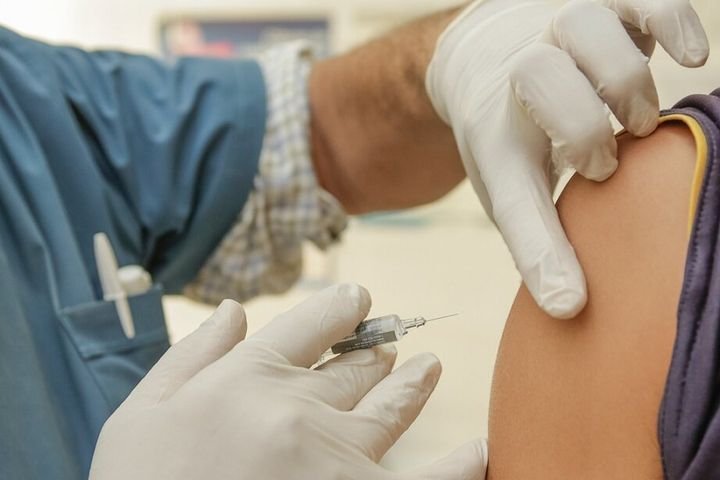Science, Technology, and the battle against COVID19
Introduction
In December of 2019, the world was thrown into an unanticipated frenzy. The novel coronavirus had emerged and it was beginning to spread like wildfire. All over the world different countries approached the sudden outbreak in different ways but one thing was common in their solutions, the use of science and technology to help fight the virus. In this article, some of the roles science and tech as played will be explained. Let’s start with good old science.
What role has science played?
Well, science started playing its role from the very beginning of the fight. Almost everything known about the virus is known because of scientific research. Now what exactly were the roles that science has played thus far?
Vaccine development
As the COVID-19 virus continued to spread it became clear that a reliable vaccine would be needed to stem its effects. Vaccines work by preparing the body's natural defenses from a possible attack of a specific pathogen. With vaccines, we all stand a better chance of putting an end to the coronavirus pandemic.
Ever since the virus was first discovered vaccines have been in development and they have undergone several trials to ensure the safety of use.

After the long verification process, seven vaccines have been rolled in several countries as of the 18th of February 2021. In most regions, vulnerable members of the population like elderly people are given priority in the distribution of the vaccines. Even though effective vaccines have been created there are about 200 more to come. These vaccines are in different stages and hopefully more would be rolled out soon.
The determinant for preventive measures
There have been a lot of studies on how COVID-19 is transmitted from one person to the other. These studies have been useful in recommending preventive measures. Studying the transmission methods of the virus enables health experts to recommend the use of facemasks (or, is it nose masks?) and practicing social distancing. Studies into the effect of crowded spaces on the spread of the novel coronavirus have also helped to educate people on the importance of avoiding social gatherings for the time being.
What role has technology played?
Technology has been utilized in so many instances. So many organizations have used it in one way or the other and the WHO(World Health Organization) is not left out.
WHO’s Database
A database is an organized collection of information that is stored on a computer system. To aid the collection and enable easier access to data the WHO developed a multilingual COVID-19 database. It is specifically used in gathering all the latest scientific findings on COVID-19. The database which is updated five days a week was developed by BIREME is vast and made easy to use with features like advanced search.
Awareness Campaigns
To raise awareness about the pandemic and advice people on how to protect themselves several sponsored ads were sent out. To spread these ads they were propagated through several technological platforms including video streaming platforms like youtube, tv channels, and many more mediums powered by technology.
The Impact of Companies
One thing that COVID-19 made clear is that it was everybody’s problem. Ultimately everybody has to fight problems that hit them to avoid going under. For this reason, it was no surprise that individual tech companies were stepping up and taking action. Here are some ways they have helped:
Amazon web services (AWS) global initiative: in response to the coronavirus pandemic AWS developed a new initiative. The company committed a total of 20 million dollars to support its customers who were actively working on diagnostic solutions for the virus.
Use of 3D printers to manufacture products in high demand: to treat covid-19 patients and limit the spread of the virus several products like PPE(personal protective equipment). Companies like Carbon and Prusa Research produce 3D printers that went into providing 3D printed face shields. The companies were able to produce thousands of these products.
Google’s DeepMind: Tech giant Google is helping in the fight against COVID-19 in two major ways. The first is through collaboration with the government of the United States to develop a secure and trusted source of information on the virus. The second way which is much more innovative is the addition of the DeepMind program as a part of its Artificial intelligence solutions. DeepMind aims to develop an effective method of predicting protein structures of SARS-COV2. This information would go a long way in the development of effective treatment methods.
Medical ferries by HPE Aruba: as hospitals and available care centers feel up there is a need to come up with innovative ideas on spaces where high-quality treatment can be administered to COVID-19 victims. HPE Aruba responded to this need by transforming a ferry into a medical ship for the treatment of infected individuals in the Liguria region. To help even further the company is providing pop-up clinics and temporary regions in three greatly affected areas North America and Europe.

Virtual Spaces
To stem the spread of the coronavirus pandemic several regions were placed under lockdowns. The restrictions put in place in many lockdown areas meant that students could not go to school and employed people could not go to work.
To address the issue and enable both parties to move forward virtual meeting platforms like zoom and google meet stepped up. These platforms improved their features and developed more like screen sharing. They also improved their capacity so more people could be admitted to meetings. The rapid evolution of these spaces made sure that work and study go on even though there are unavoidable hitches here and there.
Conclusion
With the look into the effects of science and technology, it is clear that both have gone a long way in waging the war against the COVID-19 pandemic. These impacts are not to be underestimated and it is hoped that if there were to ever be another outbreak developments in both fields would effectively stem the spread. This is something that should be well invested in as we do not want another pandemic on our hands.
References
- https://www.thelancet.com/journals/landig/article/PIIS2589-7500(20)30142-4/fulltext
- https://www.nature.com/articles/s41591-020-1011-4
- https://www.who.int/emergencies/diseases/novel-coronavirus-2019/covid-19-vaccines
https://www.coe.int/en/web/artificial-intelligence/ai-and-control-of-covid-19-coronavirus
Congratulations @hadji! You have completed the following achievement on the Hive blockchain and have been rewarded with new badge(s) :
Your next target is to reach 300 posts.
You can view your badges on your board and compare yourself to others in the Ranking
If you no longer want to receive notifications, reply to this comment with the word
STOPImagine the number of lives the pandemic could have claimed assuming it was about 100 years ago when things were still primitive when it comes to science and technology. Thanks to evolution.
People who lived about 100 years ago had their own challenges and were able to deal with them based on the level of development then. Nature has a way of compensating mankind.
You are right though. I guess nature has a way of healing the world
Thanks for your contribution to the STEMsocial community. Feel free to join us on discord to get to know the rest of us!
Please consider supporting our funding proposal, approving our witness (@stem.witness) or delegating to the @stemsocial account (for some ROI).
Please consider using the STEMsocial app app and including @stemsocial as a beneficiary to get a stronger support.
Geert Vanden Bossche, PhD, DVM has the following to say:
The science behind the catastrophic consequences of human intervention in the Covid-19 pandemic
I am herewith posting a list of a series of publications that have been instrumental in providing enlightening insights on the interplay between Covid-19 and the host immune system. They provide so to speak critical pieces of the puzzle that I have been putting together. Entire puzzles are rarely published. That’s why publications rarely bring solutions to complex problems. For your convenience, I have allocated the publications I consulted to different categories. As you will appreciate, I have been tapping into several disciplines. To ‘solve’ a problem as complex as a viral pandemic, one has to draw from several different fields, including epidemiology, (molecular) biology, virology, immunology, genetics, vaccinology and even biophysics. Again, this is why ‘finished’ puzzles cannot be found in science journals specifically dedicated to a specific field of interest.
https://www.linkedin.com/feed/update/urn%3Ali%3Aactivity%3A6776565863899242496/
Really interesting. Thanks for sharing this with me
the development of science and technology is amazing, it's helping us to deal with this covid pandemic. but I'm afraid that the latest news from WHO and experts predict that the Covid-19 virus may not disappear from the earth. and will continue to be seasonal illnesses like flu etc..
I said this a long time ago. Mankind will have to find a way to coexist with the virus. It is obvious that it won't just disappear into thin air.